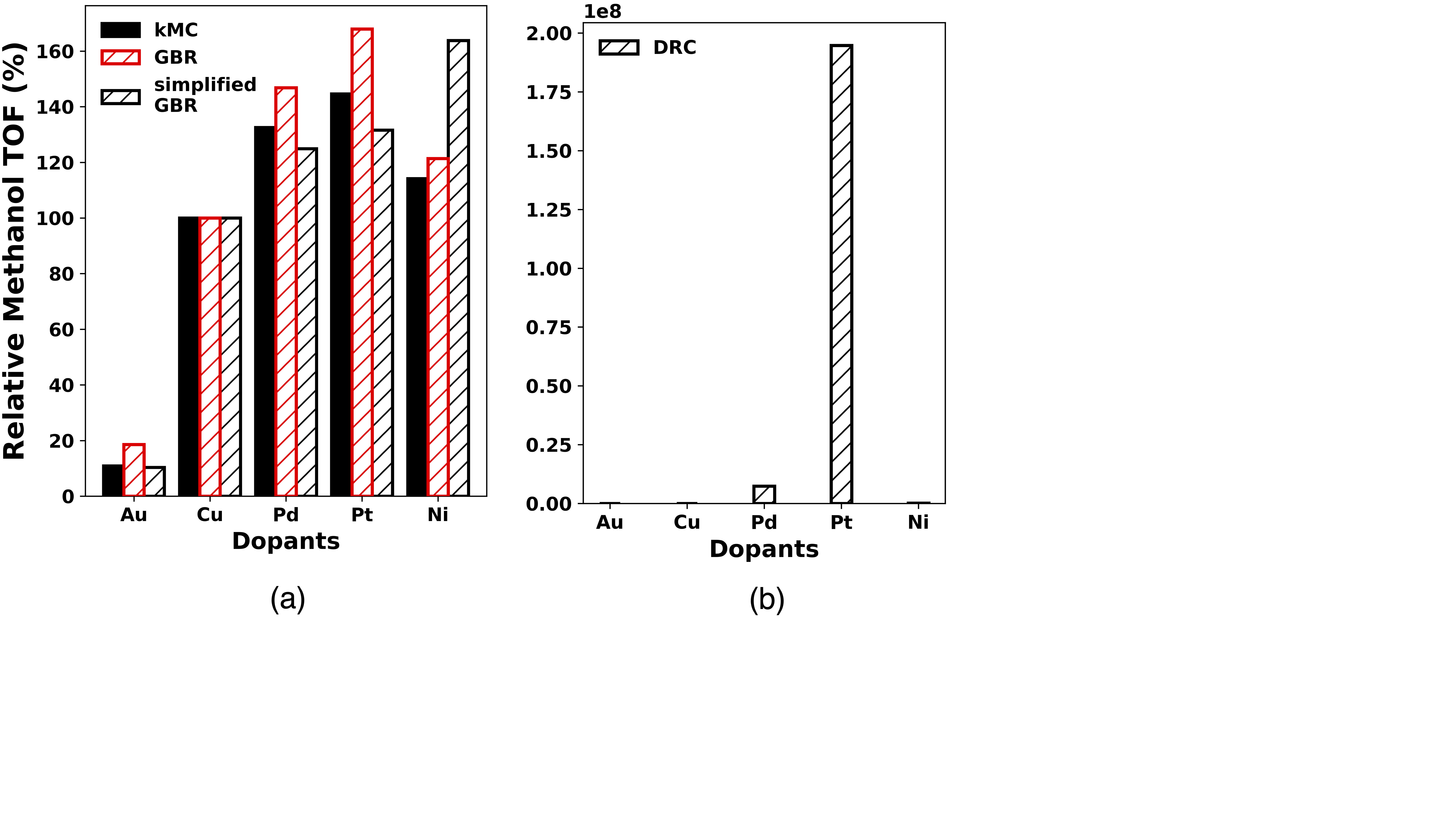2022 Annual Meeting
(426b) Enhanced Descriptor Identification and Mechanic Understanding for Catalytic Activity with Data-Driven Framework: Revealing the Interactions between Elementary Steps
Accurate identification of descriptors for catalytic activities has long been essential to the in-depth mechanic study of catalysis and recently to set the basis for catalyst screening.However, commonly used derivative-based local sensitivity analysis methods suffer from low accuracy in predictability. This study reports an enhanced approach to accurately identify the descriptors from a kinetic dataset using the machine learning (ML) surrogate model. The CO hydrogenation to methanol over Cu-based catalysts was taken as a case study. Our model captures not only the contribution from individual elementary step (i.e., first-order descriptors), but also the interaction between relevant steps within a reaction network in the form of second-order descriptors, which was found to be essential for accuracy. As a result, six effective descriptors are identified, which are accurate enough to ensure the trained gradient boosted regression (GBR) model for well prediction of the methanol turn-over-frequency (TOF) over metal (M)-doped Cu(111) model surfaces (M = Au, Cu, Pd, Pt, Ni). More importantly, going beyond the purely mathematic ML model, the catalytic role of each identified descriptor can be revealed by using the model-agnostic interpretation tools, which enhances the mechanic insight into the promoting effect of alloying. The trained GBR model outperforms the conventional derivative-based methods in terms of both the predictability and mechanic understanding. It opens alternative possibilities toward accurate descriptor-based rational catalyst optimization
Figure 1. (a) Comparison of the predicted methanol TOF from CO hydrogenation on M-doped Cu(111) between GBR model with both first-order and second-order descriptors (shadowed red bar) with the kMC simulated values (solid black bar) as criteria.(b) Predicted methanol TOF from CO hydrogenation on M-Cu(111) by the Degree of Rate Control method. All TOFs are calibrated to the Cu(111) surface respectively.
References:
1. Liao, W.; Liu, Ping. Catal. Sci. Technol., 2022, Accepted Manuscript. DOI:https://doi.org/10.1039/D2CY00284A

